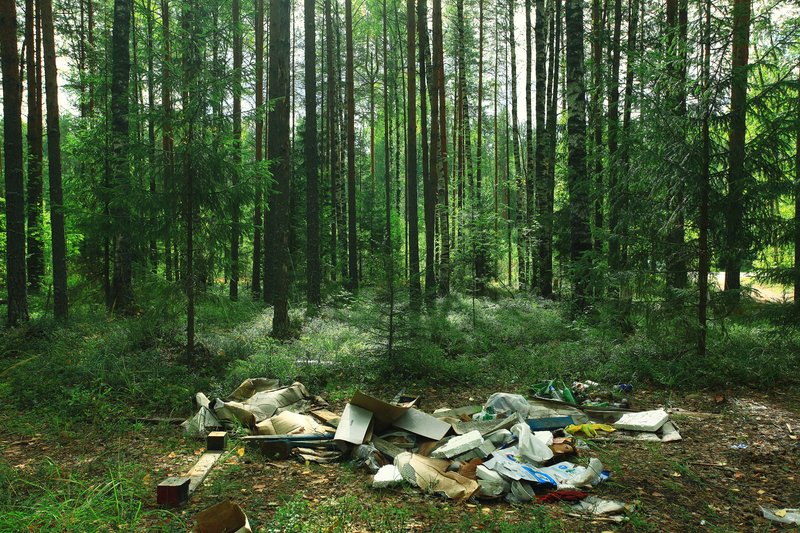Green Ways to Dispose of Pots and Pans Without Waste
Posted on 29/08/2025
Green Ways to Dispose of Pots and Pans Without Waste
Are your old pots and pans piling up, gathering dust, or cluttering your kitchen? If you're looking for eco-friendly ways to get rid of cookware, you've come to the right place. Let's explore green ways to dispose of pots and pans without waste, effectively reducing landfill contributions and making better choices for the planet.
Why Sustainable Disposal of Cookware Matters
Every year, millions of pots and pans end up in landfills, contributing to environmental pollution and resource wastage. Traditional cookware--whether it's nonstick, stainless steel, aluminum, cast iron, or ceramic--often contains materials that take centuries to decompose. Environmentally responsible disposal conserves resources, minimizes landfill use, and can even create opportunities for others.
Common Issues With Tossing Pans and Pots in the Trash
- Non-Biodegradability: Most cookware is made to last, which means it doesn't break down quickly in landfills.
- Toxic Materials: Nonstick coatings, like Teflon, can release toxic chemicals as they break down.
- Resource Waste: Metals that could be recycled are lost forever if buried with regular waste.
- Clutter: Old cookware can pile up not just at home, but in city dumps.

Assessing Your Cookware's Condition
Before seeking green methods to dispose of old pots and pans, examine their current state. Sometimes, what seems unusable for you may still benefit others or be repurposed.
- Usable: No significant dents, usable handles, functional nonstick coating.
- Fixable: Might need a handle tightened or a little cleaning.
- Beyond Repair: Warped with flaking coatings or deep rust, unsafe for food.
Different Materials, Different Methods
Pots and pans come in a variety of materials, each requiring a different approach for environmentally-friendly disposal:
- Stainless Steel and Aluminum: Highly recyclable and sought after by scrap yards.
- Cast Iron: Extremely durable--consider restoring or donating.
- Copper: Valuable and almost always recyclable.
- Nonstick (Teflon): Must be handled carefully to avoid releasing toxins.
- Ceramic/Glass: Can be challenging to recycle but alternative uses are possible.
1. Donate Usable Pots and Pans
One of the best green ways to dispose of pots and pans without waste is to donate them. Many people, shelters, community kitchens, and thrift stores would be grateful for gently used cookware.
- Check local charities, shelters, or food banks for requirements.
- Look for non-profit thrift stores like Goodwill, Salvation Army, or Habitat for Humanity ReStores.
- Post on buy-nothing groups, Freecycle, or Facebook Marketplace.
- Student dorms and starter apartments often appreciate second-hand kitchenware.
Donating Hints:
- Clean thoroughly--remove any residue, food, or stains.
- Include lids if possible.
- Be honest about the cookware's condition.
2. Recycle Old Pots and Pans
Recycling is another sustainable option for getting rid of unwanted cookware. Metals like aluminum, stainless steel, copper, and cast iron can be recycled and made into new products.
How to Recycle Cookware
- Search for scrap metal recycling centers near you.
- Contact your local recycling facility and ask if they accept cookware (most local curbside recycling does not allow pots and pans).
- Remove any non-metal parts, such as rubberized handles, plastic knobs, or glass lids (these may need to be thrown out or recycled separately).
- For nonstick pans, check for specialized recycling programs due to the Teflon coating.
Pro tip: Some cities host annual metal recycling events where residents can drop off bulk items, including cookware.
3. Repurpose or Upcycle Old Pots and Pans
Upcycling is a creative eco-friendly way to dispose of used pots and pans by giving them a new life outside the kitchen. Here are some exciting ways to upcycle them:
DIY Projects for Repurposing Cookware
- Planters: Use old pots as rustic garden containers for herbs, succulents, or flowers.
- Storage Containers: Use large pots as tool holders in the garage or craft room.
- Wall clocks or Art: Transform a pan into a decorative wall clock or artwork for a unique home touch.
- Bird Baths: Shallow pans can be used in the garden as bird baths.
- Candle Molds: Use mini-muffin pans as molds for homemade candles.
- Serving Trays: Lids or shallow pans can become quirky serving trays or organizers.
Tip: Spray paint or decorate old pots and pans to match your decor or garden setting.
4. Trade-In and Buyback Programs
Several kitchenware brands and stores offer trade-in or recycling programs to support green disposal of old cooking items. Research if your favorite cookery brand offers any of these programs when you're considering an upgrade.
- Brands like Le Creuset, Calphalon, and Williams Sonoma sometimes have trade-in deals--bring in old cookware for store credit.
- Local kitchenware shops may sponsor annual recycling drives.
- Some online retailers offer take-back schemes for cookware upgrades.
5. Curbside Bulk Pickup and Scrap Collectors
If your pots and pans are truly beyond repair or reuse, check with local bulk trash pickup or scrap metal collectors. While this isn't as direct as donating or recycling yourself, some municipalities separate metal from landfill waste, ensuring it's recycled.
- Contact your city's waste management or public works department.
- Set out clean, separated pots and pans on scheduled bulk waste days.
- Independent scrap metal collectors often pick up free metal items.
6. Composting (for Specific Materials Only)
Most cookware isn't compostable, but some ceramic pieces or unglazed clay pots can be broken up and used as pot drainage or garden filler. The process requires smashing the item (safely) into small pieces and mixing it into soil for plant beds.
Safety reminder: Always wear protective gloves and goggles when breaking ceramic or clay. Never compost items with chemical coatings, paint, or glaze.
7. Creative Community Giveaways
You might be surprised at how much local artists, crafters, or schools could use old cookware for projects.
- Contact art teachers or community centers for donation options.
- Local sculptors and DIY studios frequently use metal pans as material.
8. Eco-Conscious Disposal of Nonstick Pans
Disposing of nonstick cookware requires extra care. Pans with Teflon or PTFE coatings can release harmful substances if incinerated or broken.
- Contact manufacturers about recycling programs or mail-back offers.
- Never send nonstick items to metal recycling unless your center specifically allows them.
- Check for hazardous waste days in your community for proper disposal.
What Not to Do
- Don't put metal pans in standard curbside recycling bins (unless instructed).
- Don't toss nonstick or chipped enamelware into general trash if alternatives exist.
- Don't burn cookware, as fumes and particulate matter can be dangerous.
Frequently Asked Questions
Can I put pots and pans in my blue bin at home?
Most curbside programs do not accept cookware due to non-metal parts or coatings that can contaminate recycling streams. Check with your city or take items to a local scrap metal center.
Is it safe to recycle pans with nonstick coating?
Some recycling centers accept nonstick pans, but many do not. If permitted, try to strip the coating before recycling or use a specialized take-back program.
Should I separate materials before recycling?
Yes, remove plastic, wood, or rubber handles and any glass lids. Recycle or dispose of these separately according to local guidelines.
Do any cookware manufacturers have take-back programs?
Brands like Calphalon and GreenPan have offered recycling or trade-in programs. Always check brand websites for current options.

Step-by-Step Guide: How to Dispose of Pots and Pans Responsibly
- Assess Condition: Is the item reusable or only good for parts?
- Decide on Best Option: Donate, recycle, upcycle, or dispose of as a last resort.
- Contact Local Facilities: Find out what your municipal services or recycling centers accept.
- Prepare for Disposal: Remove non-metal parts and clean thoroughly.
- Drop Off or Arrange Pickup: Safely transport items to their next destination.
- Get Creative: Consider keeping a few pieces for future upcycling or gifting.
Conclusion: Choose Green, Sustainable Options For Disposing of Old Cookware
Rethinking how you get rid of your old pots and pans makes a difference for the planet. By opting for green ways to dispose of pots and pans without waste, such as donating, recycling, upcycling, or responsible composting, you help minimize landfill use, conserve resources, and encourage a circular approach to everyday items. Remember to seek out local options, stay informed, and imagine your old cookware living on in a new form rather than polluting the environment.
Every pan has potential beyond its initial life. Make your next disposal move a green one!

